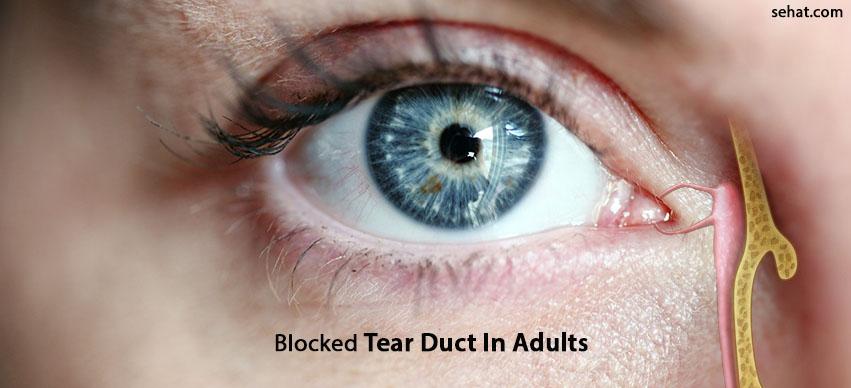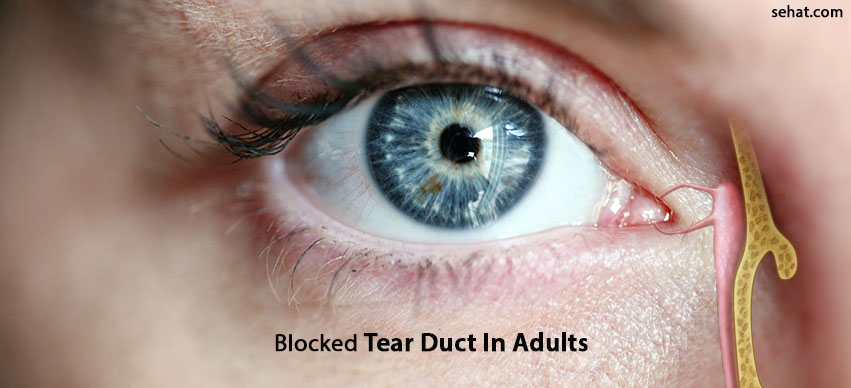
What Is A Blocked Tear Duct?
The nasolacrimal duct or the tear duct is a tiny opening present in the corners of the eyelids. These ducts open into the tear sac through which tears drain. When this nasolacrimal duct or the drainage system of the eyes is partially or completely blocked, that is, the tears cannot drain properly then it is called a blocked tear duct. Here in this article, you can know the causes, complications, and tips to prevent blocked tear duct in adults.
Symptoms Of A Blocked Tear Duct
The basic function of tears is to keep the eyes moist and prevent dryness, infections, and to avoid irritation of the eye from foreign bodies entering the eyes. Blocked tear ducts in adults may affect either one or both eyes at the same time.
A blocked tear duct in adults may present with the following signs and symptoms;
- The patient may seem to be crying as the tears accumulate on the surface of the eyes and may also overflow on to the eyelids, eyelashes, and cheeks.
- Swelling of the affected eye or a particular side of an eye
- Discharge of pus or mucus from the affected eye
- Blood tinged discharge from the affected eye may also be seen
- Dry and crusty eyelashes
- Blurred vision or disturbed vision due to continuous watering of eyes
- Fever may be present if the cause for blocked tear duct is an infection
Causes Of A Blocked Tear Duct In Adults
The blocked tear duct is commonly found among children as a congenital problem. In such cases, the valve of Hanser (a part of the tear duct) does not open as it is supposed during the developmental stages of infants.
Apart from the congenital cause, other causes for having a blocked tear duct in adults are;
- Abnormalities in the development of the face or nose such as Down's syndrome
- Recurrent and frequent infections of the nose or sinuses such as sinusitis, rhinitis
- Frequent eye infections like conjunctivitis
- Deformities of the nose
- Trauma to the nose or a broken nose can damage the tear duct
- Age-related changes causing narrowing of the duct or opening of the tear sac
- Nasal polyps (outgrown or sac-like development of an inner layer of the nose)
- Tumors may be present which puts pressure on the tear duct
Blocked Tear Duct Risks
Some risk factors for developing a blocked tear duct in adults are;
- Age and gender - Women of elderly age group are at higher risk for having age-related changes leading to the blocked tear duct
- Chronic conjunctivitis - If the eyes are constantly red, inflamed, and swollen, there is a high risk of having a blocked tear duct
- History of surgery of the eye or nose which may eventually cause scarring of the nasolacrimal duct
- History of being on chemotherapy or radiation especially of the head, neck, or face
- Frequent use of topical eye drops commonly seen in glaucoma increases the risk of the tear ducts to be blocked if the drops don't get drained properly
- People who wear contact lenses frequently are also at an increased risk of having blocked tear ducts in adults especially if the lenses are not cleaned properly
Blocked Tear Duct In Adults Treatment
Treatment for blocked tear ducts in adults will depend upon the underlying cause. Treatment options include;
- In the case of infection of the eyes or sinuses, medicines like antibiotics and non-steroidal anti-inflammatory drugs (NSAIDs) may be prescribed to reduce inflammation, infection, and swelling.
- Additionally, eye drops may be also be prescribed for symptomatic relief
- Surgical procedures may be required to unblock the duct and make way for tears to drain into the nose. Surgery will also help to prevent the duct from closing again. Some surgical procedures used to clear a blocked tear duct are;
- Dilation, probing, and irritation
- Stenting or intubation
- Dacryo-cysto-rhinostomy (a procedure to create a new route to drain tears through the nose)
- Conjunctivo-dacryo-cysto-rhinostomy (reconstruction of the entire tear or lacrimal system)
- Causes like nasal polyps, broken nose, deformities of the nose, or tumors certainly require surgery to drain the tear duct.
If you are on medications and have not opted for surgery yet, you can do the following at home to get relief from symptoms;
- Pinch the bridge of your nose and rub underneath it.
- You can place a warm cloth over the affected eye for 5-10 minutes. This will help in reducing the swelling of the eye. A warm compress may also open up a blocked tear duct in adults if the cause isn't a mechanical obstruction.
- You can clean the affected eye using a clean cloth or cotton and water.
Complications Of A Blocked Tear Duct In Adults
Since normal vision is important and the eyes are one of the most sensitive organs, it is important to visit an ophthalmologist as soon as you begin to notice any change or disturbance in normal vision. One major complication associated with a blocked tear duct in adults is it increases the chances of recurrent eye infections. A blocked tear duct favors the growth of bacteria, viruses, and fungi.
Tips To Prevent
The possible causes of a blocked tear duct in adults are already mentioned above. Yet, certain precautions can be taken to reduce the chances of having one, such as;
- Do not rub your eyes
- Use protective eyewear like sunglasses while going out especially if you are prone to recurrent eye infections
- Wash hands with soap and water frequently and avoid touching the eyes with unclean hands
- Avoid using cosmetics on the waterline of the eye if you have recurrent eye infections
- Avoid sharing cosmetics with others
- If you use contact lenses, make sure to clean them properly before and after each use
- Lastly, you need to complete your course of medicines diligently if you are in treatment for infections of the sinuses or the eyes
Eyesight is extremely important for normal living and any disturbance in vision can often disrupt the person's normal routine. Therefore it is essential to consult a doctor if you notice signs and symptoms of a blocked tear duct in adults.

